How 'the same hillside' is the source of three rivers
- Published
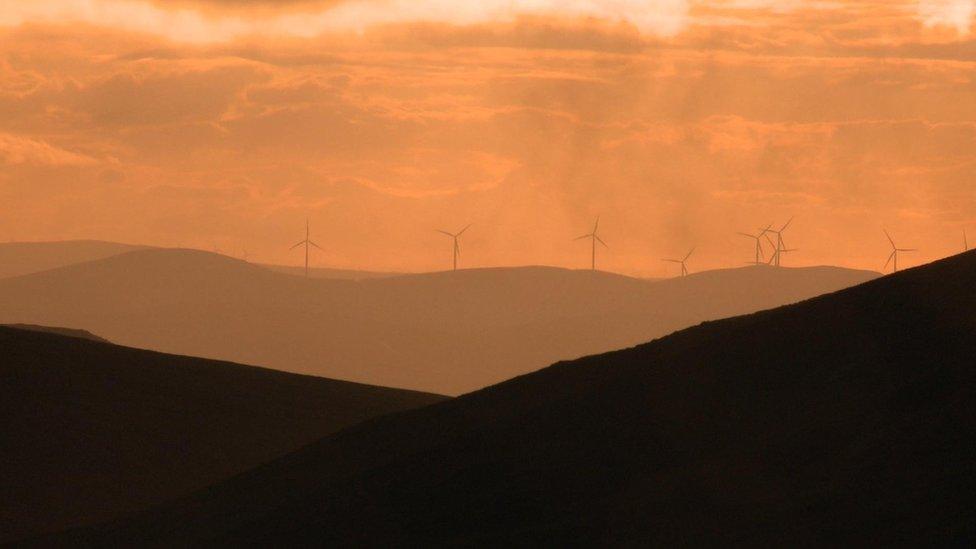
Wind turbines at the summit of Clyde Law, close to the source of three of Scotland's most famous rivers
Three of Scotland's best-known rivers have their source in one small, wild and largely-forgotten area in south-west Scotland. An artist and a scientist have joined forces to highlight how much we depend on this remote landscape.
Drivers rushing down the A74(M) between Abington and Moffat will rarely spend much time thinking about the landscape they are travelling through but Prof Pete Smith thinks they should.
The soil scientist says that as the terrain changes from farmland to barren upland hills it appears to become totally wild.
But scratch beneath the surface and you will find a lot more going on.
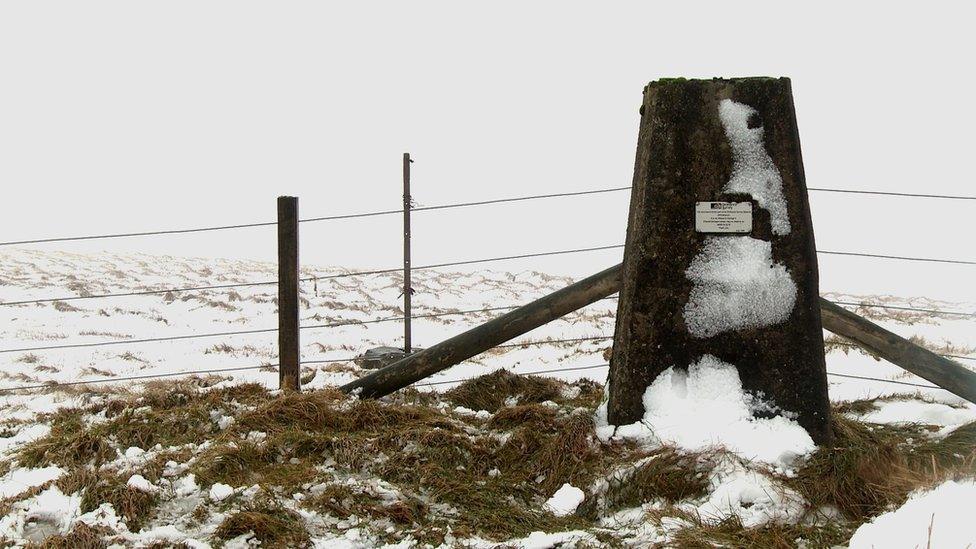
Clyde Law trig point: From here downpours can trickle all the way to the North Sea, Solway Firth and Firth of Clyde
The most remarkable feature of this stretch of hillside is that within just a few miles the rivers Tweed, Clyde and Annan rise and begin their journeys to different corners of Scotland.
The headwaters of the Annan Water and the Tweed are separated by a few hundred metres of connected bogs and ditches.
But the Annan runs south and empties into the Solway Firth on the west coast while the Tweed, which serves as the border with England for a stretch of its length, flows out into the North Sea on the east coast at Berwick.
A short distance away the Clyde drains north-west, becoming the major waterway on which Glasgow and the west of Scotland ports were built.
"It's like a bagatelle board," says Prof Smith.
"If a drop of rain lands on one side of the hillside it could end up in the North Sea.
"But if it lands on the other it will end up in the Clyde.
"Depending on where a particular shower of rain falls you can have that water distributed through these rivers out into different seas."
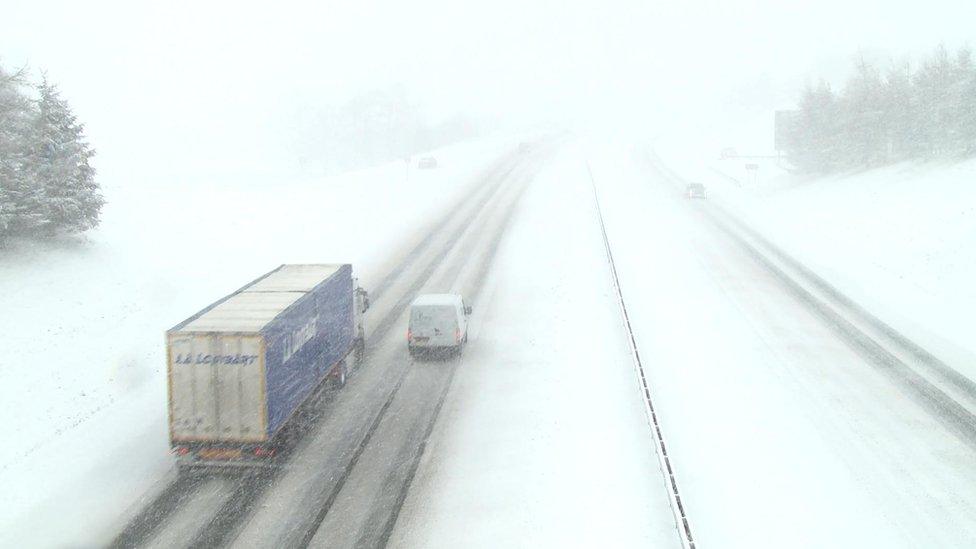
The A74(M) runs close to the source of the three rivers
Prof Smith is the scientific adviser to a project by artist John Wallace, which will be displayed at the Centre for Contemporary Arts in Glasgow until Saturday.
The Same Hillside uses documentary video and audio recordings to capture the impact of modern lives, external on what he calls "Scotland's resource heartland".
The Aberdeen University expert says: "We are used to getting food and maybe timber from the environment, those things are obvious.
"But the environment also provides us with clean water and clean air. It provides us with biodiversity and pollinators for our crops.
"These are things provided by the natural environment that we perhaps don't consider as often as the more obvious ones."
He points out that the motorway runs through the hills, as does the main West Coast railway and there are flight paths overhead.
"Probably for most people just whizzing past on the train or in the car they don't realise the complexity of the interactions between humans and the environment that are occurring."
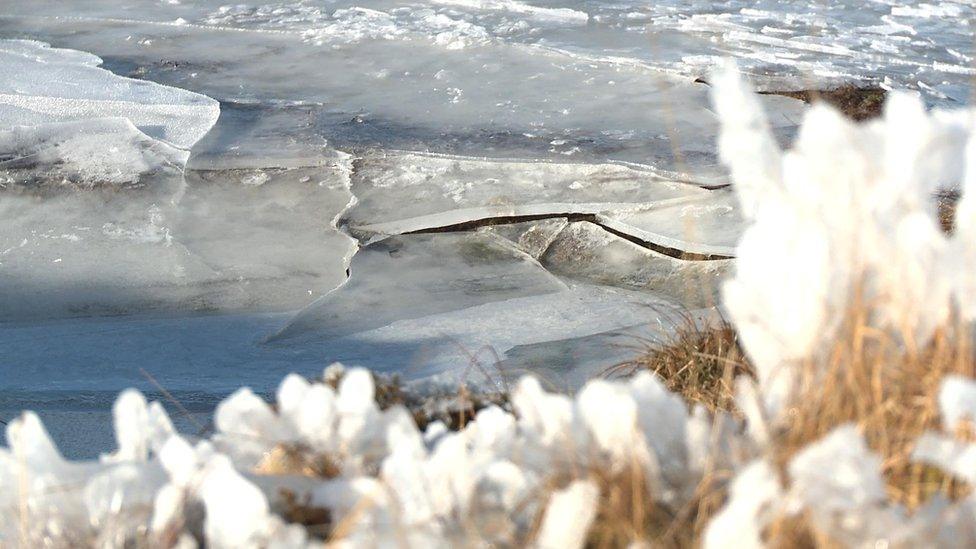
The ice crack at Daer Reservoir near source of the River Clyde
"You look around and dotted on some of the hilltops you've got wind farms which are providing energy and you've got commercial forestry," he says.
"There are all these different services being provided in what at first looks like a really wild landscape.
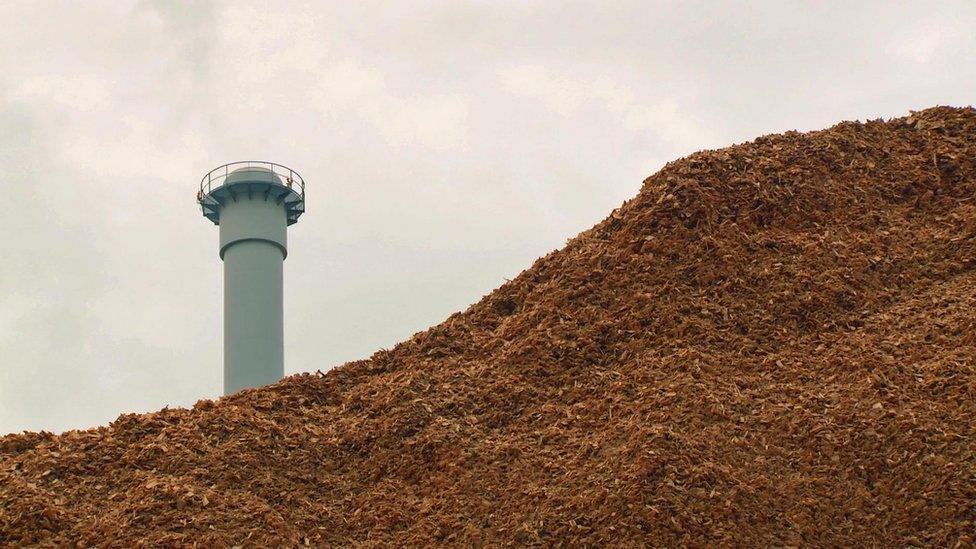
Forestry waste biomass fuel and power station smoke stack
"The art installation is comparing and contrasting the different uses of the land in what looks like a wild area and all the different things that are being provided to us as humans living in the modern world and how these things are co-existing together."
Prof Smith is a long-term contributor to the Intergovernmental Panel on Climate Change (IPCC), which was awarded the Nobel Peace Prize in 2007.
He says wild areas such as the one featured in The Same Hillside should be "cherished and protected".
The climate change expert says Scotland is particularly rich in peat land, which is a more carbon-rich ecosystem than the Amazon rain forest.
"If we start to wreck peat lands by draining them for agriculture or other uses we will be having a negative impact on our future climate," he says.
According to Prof Smith, his work with John Wallace is a piece of art so he does want to preach to people.
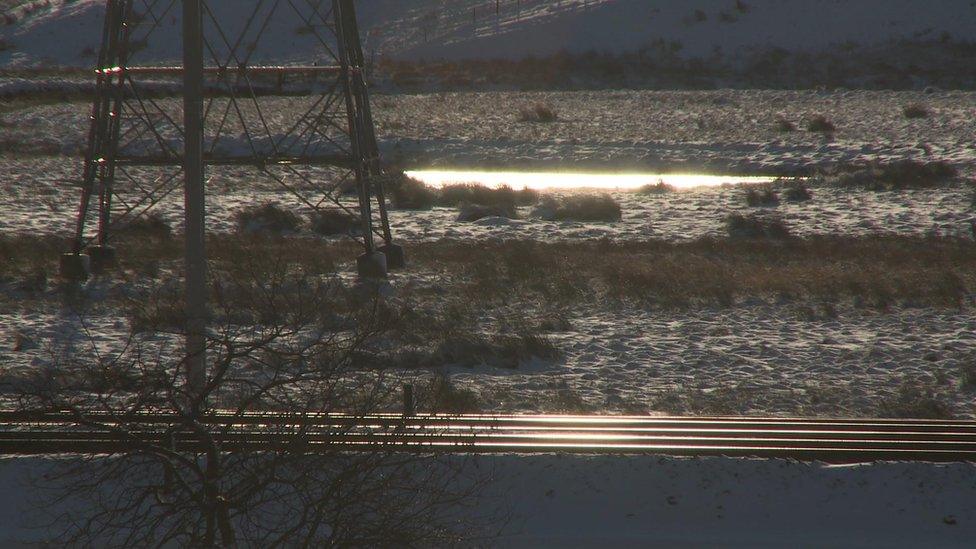
Railway lines and power lines run through the wild landscape
"But we want to raise awareness of the complexity and the multitudes of things that go on in these landscapes," he says.
"We want people to know how fragile some of them can be and how we need to protect them because they provide us in our modern lives with a huge number of things that we are not always aware of."